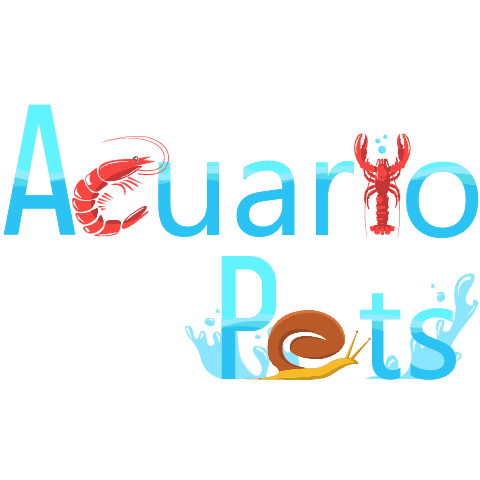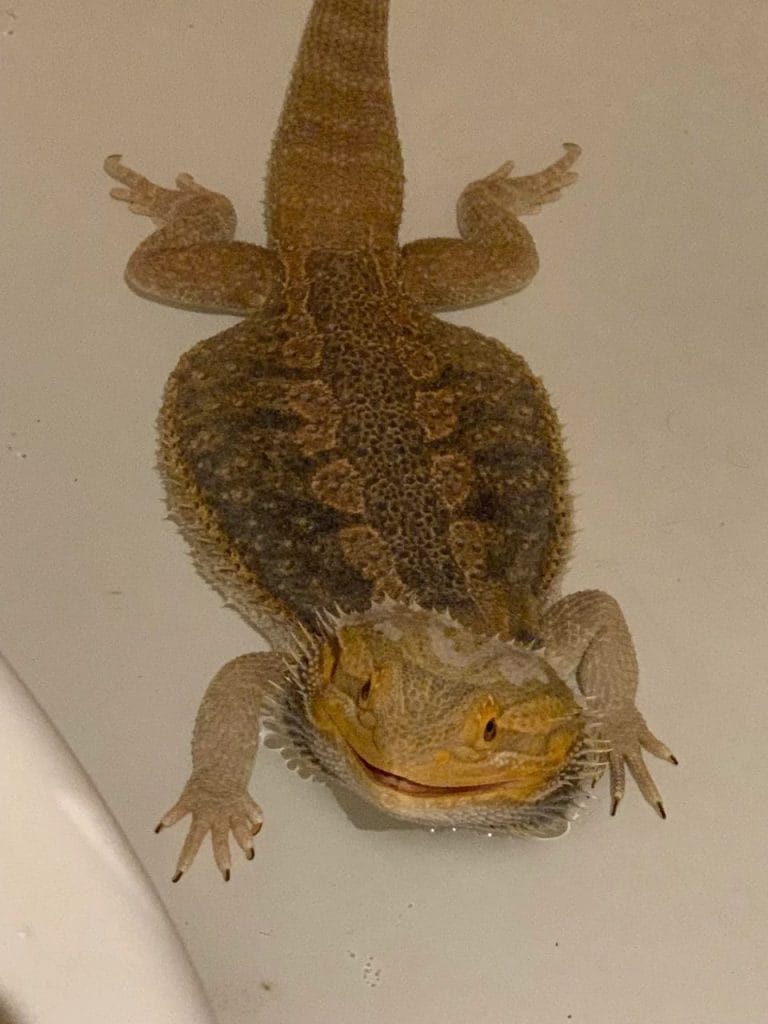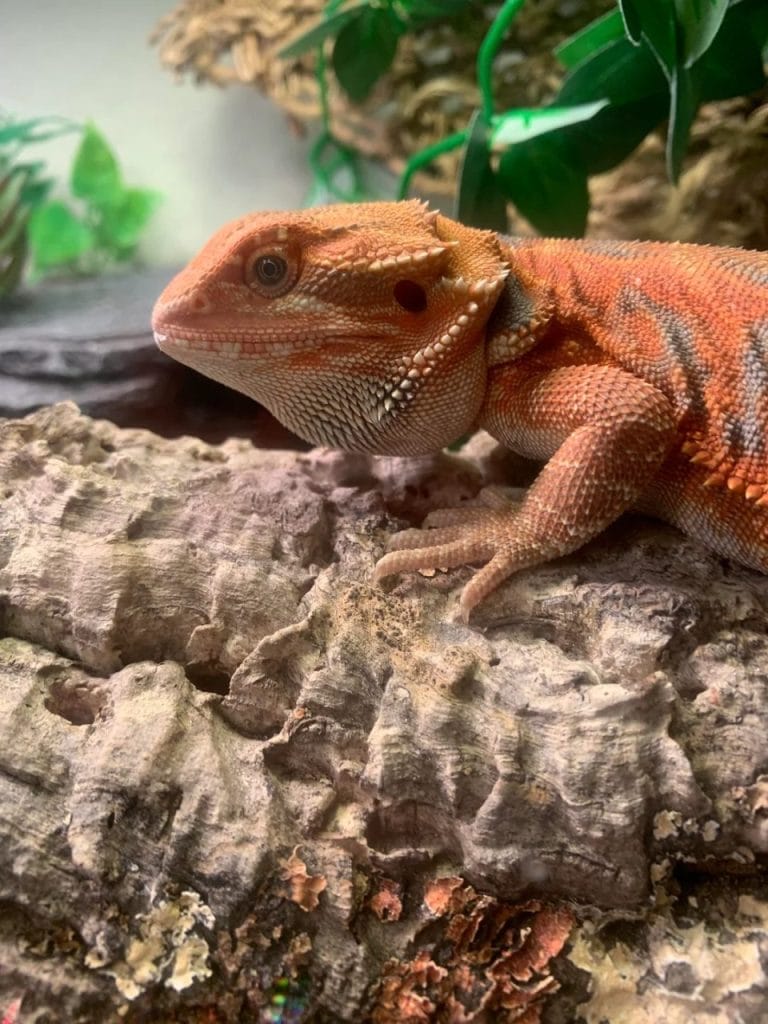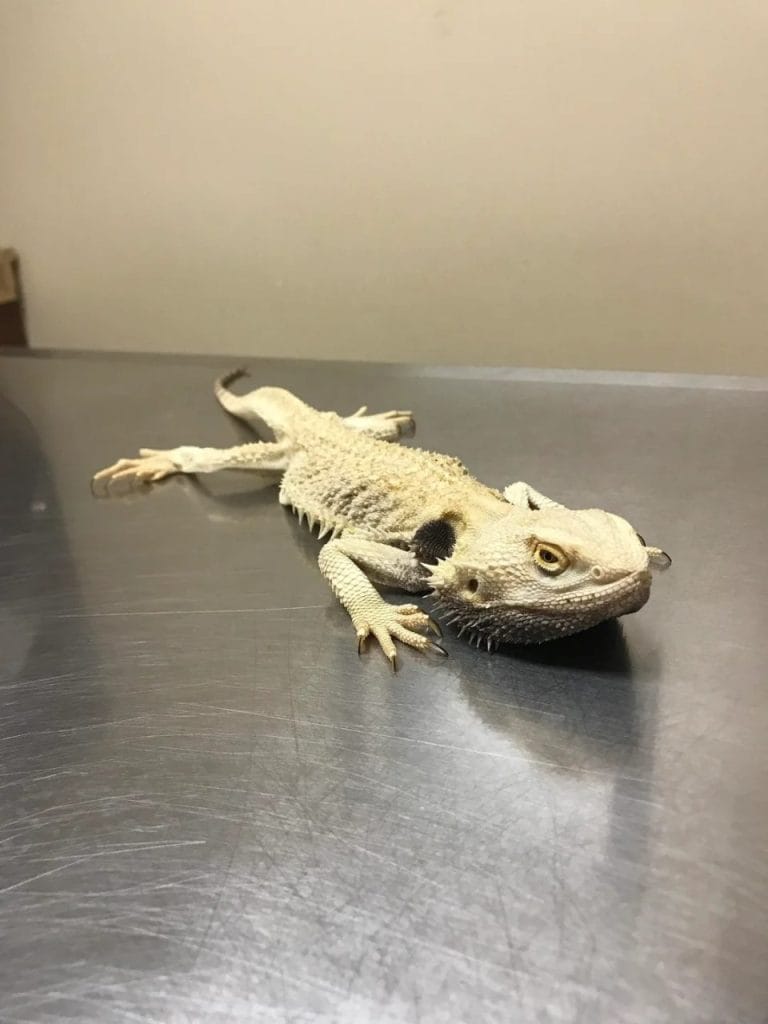This post was created with help from AI tools and carefully reviewed by a human (Muntaseer Rahman) . For more on how we use AI on this site, check out our Editorial Policy.
Check Out These FREE Tools We Made JUST For You!
How Do You Treat URI In Bearded Dragons? [Prevention, Treatment]
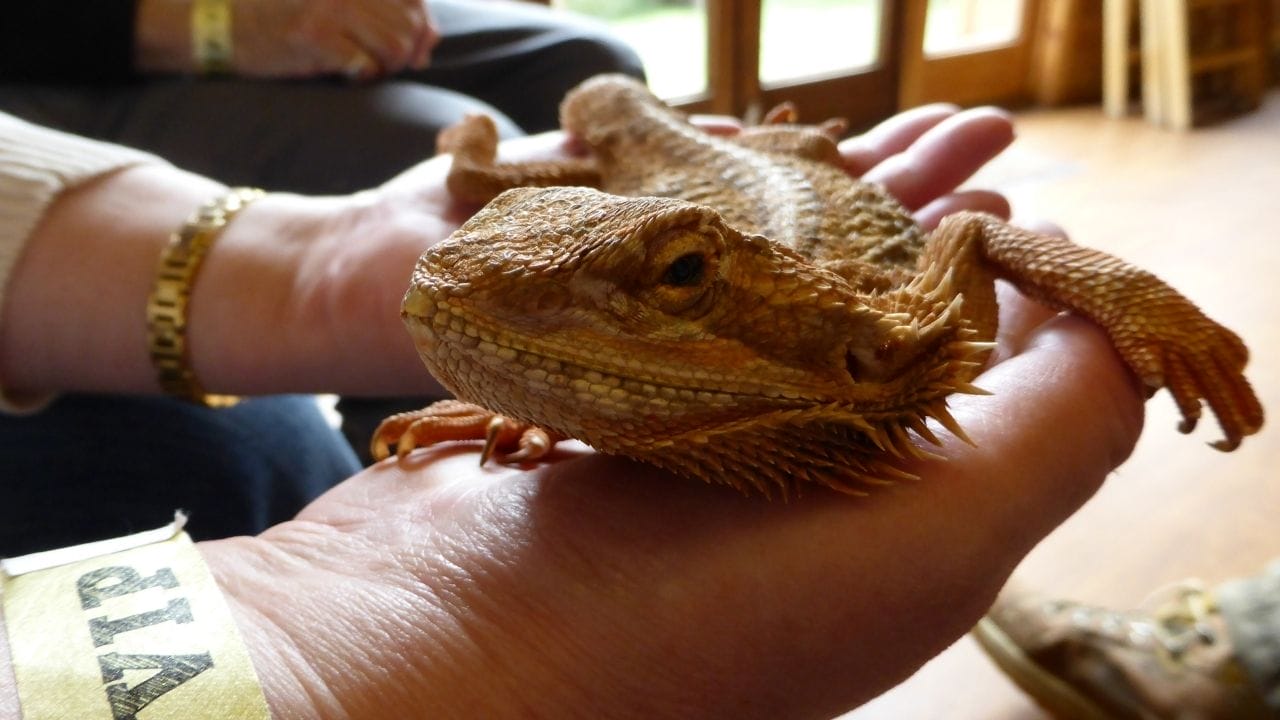
Have you noticed your bearded dragon acting sluggish or breathing oddly? These tiny signs could point to a bigger issue—a respiratory infection, or URI.
Left untreated, URIs can be life-threatening for your scaly companion, but the good news is they’re entirely manageable with the right care.
In this guide, we’ll break down how to treat and prevent URIs, so your bearded dragon can stay healthy and happy.
What Is a URI in Bearded Dragons?
A URI stands for Upper Respiratory Infection. It’s when your bearded dragon catches a “cold” but far worse.
These infections can mess with their breathing and energy levels. They’re not just a small problem—they can turn deadly if ignored.
What Causes a URI?
Here’s what usually triggers it:
- Cold Temps: Dragons need a warm environment to stay healthy.
- High Humidity: Too much moisture can lead to bacterial growth.
- Dirty Tanks: A messy tank invites bacteria to party.
- Weak Immune System: Stress or poor diet can leave them vulnerable.
I learned this the hard way with my own dragon, Spike. I got lazy about cleaning his tank one month. Before I knew it, he was wheezing! A quick vet trip set me straight, but it was a wake-up call.
Recognizing the Symptoms of URI in Bearded Dragons
Catching a URI early is a lifesaver for your bearded dragon. Literally. These little guys can’t tell you what’s wrong, so you need to play detective.
Common Symptoms of URI
Here’s what to watch out for:
- Wheezing or Clicking Sounds: If your dragon sounds like a squeaky toy, it’s a red flag.
- Mucus Buildup: Check their nose and mouth for any sticky discharge.
- Open-Mouth Breathing: Bearded dragons shouldn’t look like they’re panting like dogs.
- Lethargy: If your dragon’s favorite hobby is suddenly just sitting still, something’s off.
- Loss of Appetite: They’ll refuse even their favorite snacks—big clue!
I once noticed my dragon, Ziggy, perched under his basking light, wheezing like he’d run a marathon. He wasn’t eating his usual worms either. Turns out, it was a URI.
Subtle Signs
Sometimes, URIs are sneaky. Keep an eye out for:
- Weight Loss: A slow drop in weight could be a symptom.
- Unusual Posture: Sitting with their head raised is a sign they’re struggling to breathe.
- Behavior Changes: Moody, hiding, or acting weirdly inactive.
When Ziggy started avoiding me (his favorite human!), I knew something was wrong. Bearded dragons don’t ghost you without a reason.
Quick Check Table
| Symptom | Severity | Action Needed |
|---|---|---|
| Wheezing or clicking | High | Call the vet ASAP |
| Mucus discharge | Medium to High | Monitor, consult a vet |
| Open-mouth breathing | High | Immediate vet visit |
| Lethargy | Medium | Adjust habitat, vet if persists |
| Loss of appetite | Medium | Observe, vet if continues |
Why Acting Quickly Matters
Dragons can’t tough it out like humans. If you wait too long, the infection can spread. And trust me, you don’t want that.
Ziggy’s vet said, “You caught it just in time.” That’s what we want for your dragon too!


Your Beardie Has More to Say…
This article tells you WHAT to do, but do you know WHY your dragon needs it? Or what they’re thinking when you do it wrong?
Read the full rant (all 20 chapters of it) in: “What Your Bearded Dragon Wishes You Knew”
*Told by a very frustrated beardie who’s had ENOUGH of watching you guess.*
How to Prevent URI in Bearded Dragons
Prevention is way easier than treatment. Trust me, you don’t want to deal with a sick dragon—it’s stressful for both of you. Keeping your bearded dragon healthy is all about maintaining the right environment and care routine.
Maintain Proper Enclosure Conditions
Bearded dragons thrive in a specific climate. Think hot and dry, like the desert.
Key tips for the perfect setup:
- Basking spot: 95–110°F (they love it toasty).
- Cool side: Around 75°F for when they want to chill.
- Humidity: Keep it low, ideally 30–40%. Too much humidity invites trouble.
I made the mistake of not double-checking my dragon’s enclosure once, and the humidity was way too high. Luckily, I caught it before it caused any harm.
Keep It Clean
Dragons aren’t fans of mess (and neither are we!). A dirty enclosure is a breeding ground for bacteria.
- Remove poop and uneaten food daily.
- Deep-clean the tank weekly with a reptile-safe disinfectant.
- Replace substrate regularly, especially if you use loose materials.
Feed a Balanced Diet
A healthy dragon is less likely to get sick. Feed them a mix of insects, greens, and occasional treats.
My dragon’s favorites:
- Dubia roaches (super nutritious).
- Collard greens.
- Blueberries (as a rare snack).
Don’t forget hydration! Some dragons won’t drink from a bowl, so mist their veggies or try a drip system.
Minimize Stress
Stress can weaken their immune system. Ever notice your dragon getting grumpy after too much handling?
Ways to reduce stress:
- Handle them gently and not too often.
- Don’t overcrowd their space with décor.
- Avoid loud noises near their enclosure.
I learned this the hard way when I had my dragon’s tank near the TV. Every loud action movie left him puffed up and cranky.
Regular Checkups
Even if your dragon looks healthy, regular vet visits are a must. Vets can spot issues before they become major problems.
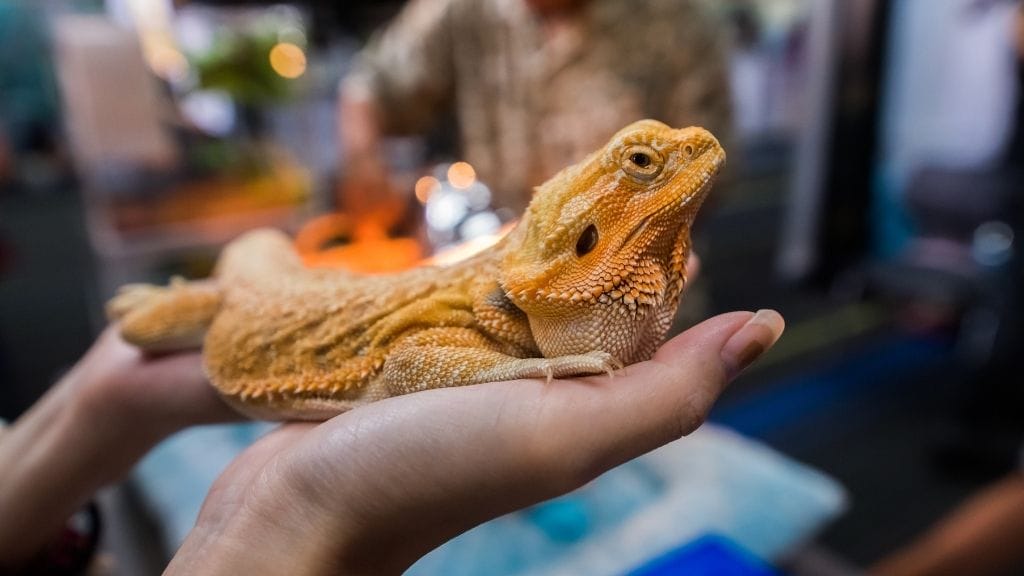
How to Treat URI in Bearded Dragons
A URI (Upper Respiratory Infection) isn’t something you can ignore. Bearded dragons are tough little reptiles, but they need your help when they’re sick. Treating a URI takes a mix of vet care and some TLC at home. Let me walk you through it.
First Stop: The Vet
If you think your dragon has a URI, don’t wait. Take them to the vet.
Here’s why:
- URIs can get worse fast.
- Only a vet can confirm the infection and prescribe the right treatment.
When my beardie, Spike, started wheezing, I was tempted to “wait and see.” Bad idea! The vet prescribed antibiotics, and Spike got back to his sassy self in no time.
Medications
Most URIs need antibiotics. These come from your vet, not the pet store.
- Liquid Antibiotics: Easy to dose, but you’ll need to be patient.
- Injections: Rare but effective for serious cases.
Pro tip: Wrapping your dragon in a towel “burrito” makes giving meds less stressful for both of you.
Home Care: Set Up a Healing Environment
After seeing the vet, you’ll need to tweak your dragon’s habitat. A few small changes can make a big difference.
Adjust Temperature
- Keep the basking spot a bit warmer than usual (105–110°F).
- Warmth helps them fight the infection.
Control Humidity
- Low humidity is key. Aim for 20–40%.
- Use a dehumidifier if needed.
Keep It Clean
- Spot-clean daily.
- Deep clean weekly. Germs love dirty habitats.
I learned this the hard way. Spike’s URI flared up again when I got lazy with cleaning. Don’t be like me.
Encourage Eating and Drinking
Sick dragons often stop eating. That’s bad news.
- Offer soft foods like mashed veggies or baby food.
- Use a dropper to give water if they’re not drinking.
One trick? A warm bath. Bearded dragons often drink while soaking.
Monitor Recovery
Keep an eye on symptoms.
- Is your dragon eating?
- Are they breathing easier?
- Any signs of mucus or sneezing?
If things don’t improve, head back to the vet.
Final Tip: Act Quickly
A URI isn’t a “wait and see” illness. Fast action means a quicker recovery and a happier dragon. I learned this when Spike bounced back like a champ after just a week of treatment.
Your dragon might not say “thank you,” but trust me—they’ll show it by being their feisty, beard-puffing self again!

Can You Treat URI Without a Vet?
Honestly, it’s tempting to skip the vet visit. We’ve all been there—Googling symptoms, hoping for an easy fix. But URIs in bearded dragons aren’t something to mess with.
Why the Vet Matters
A vet can:
- Properly diagnose the infection (it might not even be a URI!).
- Prescribe the right antibiotics.
- Check for complications like pneumonia.
I once thought my dragon’s sneeze was “just dust.” A week later, she wasn’t eating, and her breathing sounded awful. The vet saved her. Don’t wait for it to get that bad!
DIY Remedies: The Risks
Some people suggest home treatments, like warm baths or adjusting habitat temps. Sure, these might help a little, but they won’t cure an infection.
Why DIY falls short:
| DIY Method | Why It’s Not Enough |
|---|---|
| Warm Baths | Hydration helps, but it won’t kill bacteria. |
| Humidity Adjustments | Prevents worsening but doesn’t heal. |
| Over-the-Counter Meds | Dangerous! Not tailored for reptiles. |
When DIY Helps (But Only Temporarily)
If you can’t get to a vet right away:
- Raise the temperature in their tank slightly to boost immunity.
- Reduce humidity to prevent further irritation.
- Keep your dragon hydrated with a syringe if they aren’t drinking.
These steps might buy you time, but they’re not a cure. Think of it like putting a band-aid on a broken bone—it’s not enough.
You can’t fully treat a URI without a vet. It’s like trying to fix your car with duct tape. You might get lucky, but it’s risky.
Trust me—take your beardie to a vet. It’s better to deal with a small bill now than heartbreak later.

When to Call the Vet Immediately
Sometimes, waiting it out isn’t an option. Bearded dragons can go downhill fast if a URI gets severe. Here’s when you should grab the phone and call the vet ASAP.
Serious Signs to Watch For
If you see any of these, it’s time to act:
- Labored breathing: If your dragon looks like it’s gasping or puffing its beard to breathe.
- No appetite: Skipping one meal? Maybe okay. Not eating for days? Big red flag.
- Wheezing or clicking sounds: These mean it’s struggling to breathe properly.
- Mucus buildup: Excess mucus around the nose or mouth isn’t normal.
- Lethargy: Lying around all day and barely moving isn’t just being chill—it’s concerning.
How I Knew It Was Time
Once, I noticed my beardie sitting with its mouth slightly open, struggling to breathe. At first, I thought it was just basking. But when I heard a faint clicking sound, I knew something was off. A quick call to the vet confirmed it was a URI. It needed antibiotics immediately.
Why You Shouldn’t Wait
Bearded dragons hide illnesses. It’s their survival instinct.
By the time symptoms are obvious, the infection can be serious.
Think of it this way: waiting too long could make recovery harder and more expensive.
Quick Vet-Call Checklist
Before you call, jot down:
- Symptoms you’ve noticed
- When the symptoms started
- Any changes in their behavior or environment
Having this info ready helps your vet give better advice.
I learned the hard way that a URI isn’t something you can “wait and see.” If in doubt, just make the call. It’s better to be safe than sorry.
About Author
Hello, I’m Muntaseer Rahman, the owner of AcuarioPets.com. I’m passionate about aquarium pets like shrimps, snails, crabs, and crayfish. I’ve created this website to share my expertise and help you provide better care for these amazing pets.
Disclaimer
This site is owned and operated by Muntaseer Rahman. AcuarioPets.com is a participant in the Amazon Services LLC Associates Program, an affiliate advertising program designed to provide a means for sites to earn advertising fees by advertising and linking to Amazon.com. This site also participates in other affiliate programs and is compensated for referring traffic and business to these companies.
